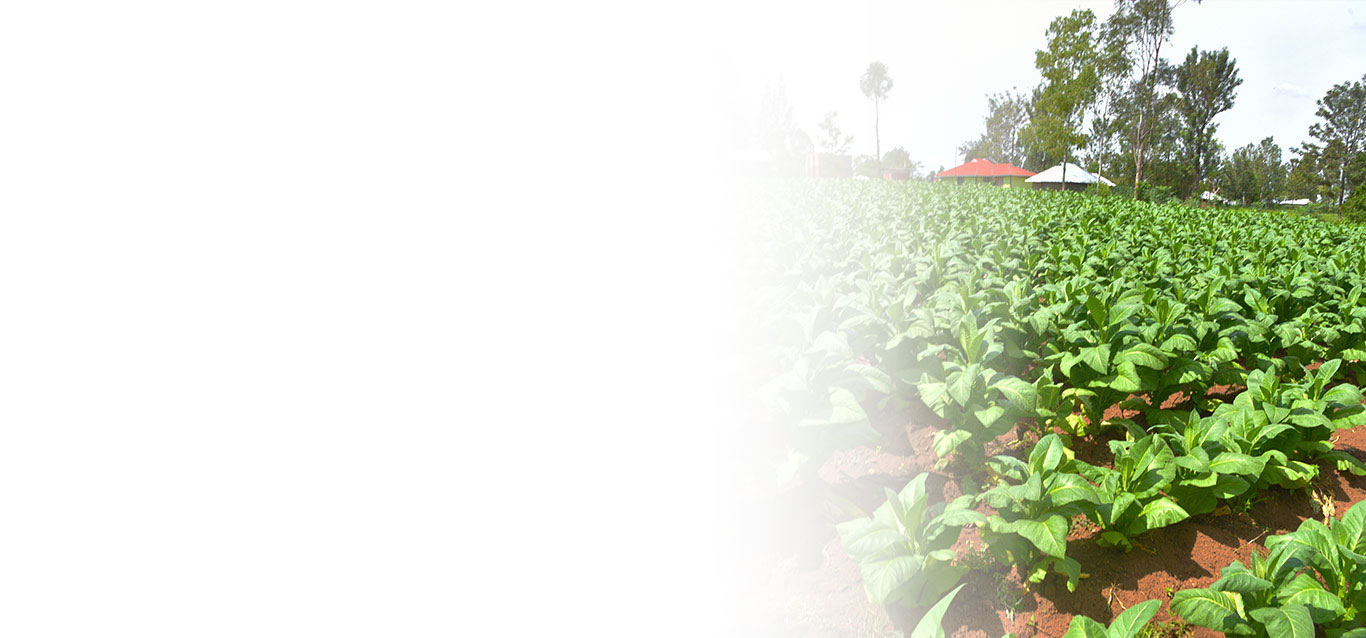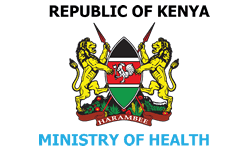
Tobacco Farming in Kenya
The economic significance of tobacco farming in Kenya has been declining over the years, with a 16% overall decline in acreage under tobacco, from approximately 19,000 hectares in 2010 to approximately 17,000 hectares in 2019.
Tobacco growing, curing and consumption have detrimental impacts on the environment, the health and the socio-economic status of tobacco growing communities.
This page demystifies the myths surrounding tobacco farming in Kenya, especially that of the economic significance of tobacco farming to Kenya’s economy. It estimates the number of tobacco farmers in Kenya, the reasons for declining tobacco production in Kenya, tobacco farming’s harmful impact on the environment, the health and socio-economic status of tobacco growing communities, and the available alternative crops that tobacco farmers can switch to. To learn more about the data and methods used on this page click here.
Number of Contract and Independent Tobacco Farmers, 2011
Commercial tobacco farming in Kenya started in 1971 with BAT contracting approximately 1500 tobacco farmers in 3 regions – South Nyanza (1971), Western (1975) and Eastern (1978). This figure has increased over the years to 55,000 farmers in 2011, with Western Kenya having the most at 24,000 (44%), South Nyanza having 17,000 (31%) and Eastern having 14,000 farmers (25%).
These figures comprise both contract and non-contract/independent farmers. Note that though tobacco is also grown in Central Kenya (Muranga, Thika, Kirinyaga Counties) we were unable to obtain the number of farmers in these areas.The number of Kenyan tobacco farmers is insignificant in comparison with the total Kenyan labor force: tobacco farmers comprise 0.5% of the agricultural labor force, and 0.3% of the total labor force in Kenya (as at 2011).
There has been an overall decline of 16% in the area harvested under tobacco farming between 2010 and 2019.
Acreage Under Tobacco Farming and Production
The number of hectares under tobacco decreased sharply between 2010 and 2015 (from 19 000 ha to 14 000 ha) but stabilized at around 16 000 ha subsequently. Similarly, the quantity of leaf tobacco produced decreased sharply between 2010 and 2013 but also stabilized at about 11 000 tons in subsequent periods.
Kenya’s drop in tobacco production mirrors broader global trends. From 2013 onwards, tobacco-producing countries globally, including the seven largest tobacco producers in the world (China, Brazil, India, the United States of America, Indonesia, Zimbabwe and Malawi) experienced decreasing levels of tobacco leaf production. The reasons for this decline can be divided into demand and supply factors. The supply factors include the decline in tobacco leaf prices due to poor tobacco leaf quality, more tobacco on international markets from competing countries, the inventory strategies used by tobacco companies (where they release stock when it is economically advantageous to do so), and the promotion of alternative crops. The demand factors include advancements in manufacturing technology and an increased demand for filtered cigarettes. This results in 15% to 20% less tobacco leaf being used in the manufacture of the same quantity of cigarettes and a consequent reduced demand for raw tobacco leaf. In light of these factors, tobacco leaf production is predicted to decline further.Tobacco farming negatively impacts farmers’ lives and their environs. In this section we discuss the impact of tobacco farming on the environment, the health and socio-economic status of farmers, on food security and on use of child labor in farms.
Given the adverse socio-economic and environmental impacts of tobacco farming, Art 17 of the FCTC and S 13(1) of the Tobacco Control Act 2007 requires the Government of Kenya to promote economically viable alternatives for tobacco workers, growers and, as the case may be, individual sellers.
This module discusses why farmers take up tobacco farming, what factors influence their ability to switch to alternative crops and provides a case study of a successful alternative cropping project in Kenya.
Factors Influencing Farmers To Take Up Tobacco Farming
Despite its numerous environmental, health and social harms, Kenyan farmers take up tobacco farming because it is seen as the most economically viable crop since it has a ready market.
Reasons for growing tobacco
The graph above illustrates the results of longitudinal studies of 455 farmers in 2017 and 2018. According to the 2018 study results, 96.3% of farmers grew tobacco because it was the only viable cash crop capable of providing them with satisfactory returns, whereas 64.2% cultivated tobacco because it was highly lucrative. Some 86.4% of farmers, meanwhile, grew tobacco because it had a ready market.
There was a significant decline in the proportion of farmers who pursued tobacco farming because of the incentives provided by the tobacco companies (from 50.6 in 2017 to 24.7% in 2018. This shift is partly attributed to a shift in geographical focus by the tobacco companies.
Factors Influencing Uptake of Alternative Crops
Governments need to address the factors that influence crop choices if they are to successfully encourage tobacco farmers to take up alternative plants: These factors include:
Case Study – The Tobacco Free Farms Project
The Migori County Government received the 2023 World No Tobacco Day Award for helping tobacco farmers sustainably transition to other crops.
The Tobacco-Free Farms Project, launched in Kenya in 2022, is a joint initiative between the World Health Organization (WHO), Food and Agriculture Organization (FAO), World Food Programme (WFP), and the United Nations Capital Development Fund, the Kenya Ministry of Health, the Kenya Ministry of Agriculture, and county departments of health and agriculture. The initiative helps tobacco farmers switch to alternative livelihoods, increases awareness about the harms of tobacco growing, demonstrates the economic viability of alternative crops, and builds knowledge of farmers to effectively make the switch. It also helps farmers scale up and sustain the alternative crop production and market ecosystem.
High-iron Nyota beans was selected as an alternative crop for several reasons. These drought-resistant beans, which increase food and nutrition security, have lower input and labor costs than tobacco, shorter maturity periods (65-75 days), and fast cooking times (<20 minutes). These beans also improve soil fertility through nitrogen fixation, and their leaves can be used as vegetables and animal feed. As such, there is strong demand for such beans in the market. Since the project began, an additional two new partners have been formally engaged: the United Nations Convention to Combat Desertification (UNCCD) and Vestergaard. New partnerships are being explored with United Nations Industrial Development Organization (UNIDO)
Tobacco-Free Farmers Project Achievements
Cost-Benefit Analysis Between Tobacco and Nyota Beans Farming
2,045 farmers are planting high-iron beans across Migori, Meru, Busia, and Bungoma counties.
3,534 acres of high-iron beans have been planted, and 647 metric tons harvested.
An additional 250 farmers in Meru are planting mung beans (green grams) and red cow peas.
Farmers are earning at least 3x more from growing high-iron beans in comparison to tobacco under the Tobacco-Free Farms Project.
Source: WHO
Nyota beans have lower production costs and higher net incomes per season in comparison to tobacco. The average production cost for Nyota beans is KES 30,000 compared to KES 209,776 for tobacco. The net revenue from Nyota beans (KES 49,350) is more than three times the revenue of tobacco (KES 15,224) per season. Furthermore, Nyota beans have two planting seasons in a year, which translates into a net income per annum to KES 98,700. Meanwhile, net revenue from tobacco stands at KES 15,224 due to only one planting season in a year.
The tobacco industry often cites the contribution of tobacco growing to the economy of a country as a reason either to encourage the expansion of tobacco growing or to avoid the adoption and implementation of measures that would reduce tobacco consumption. This section demystifies tobacco industry arguments about its contribution to Kenya’s economy.
Myth: The Tobacco industry is a good corporate citizen
Fact: The Tobacco industry in Kenya fails to comply with applicable environmental and occupational health and safety standards.
Myth: Tobacco farming benefits the tobacco farmer.
Fact: Tobacco farming enslaves tobacco farmers.
Myth: Tobacco farming and production make a significant contribution to Kenya’s economy.
Fact: Tobacco farming and production are an insignificant part of Kenya’s economy.



